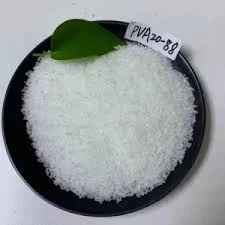Hydroxypropyl Methylcellulose (HPMC) A Versatile Polymer in the Modern Industry
Hydroxypropyl Methylcellulose (HPMC) is an important cellulose ether that has gained prominence across various industries due to its versatility and functional properties. This semi-synthetic polymer is derived from cellulose, the most abundant organic polymer on Earth, and is extensively used in pharmaceuticals, food, construction, and personal care products.
Properties of HPMC
HPMC exhibits a range of beneficial characteristics that make it a preferred choice for many applications. It is a white, odorless powder that is soluble in cold water but insoluble in hot water. When dissolved, it forms a viscous gel that can be adjusted to different concentrations to meet specific requirements. The viscosity of HPMC depends on the concentration, the degree of substitution, and the molecular weight, allowing for fine-tuning in formulations.
One of its key features is its role as a thickening agent. This property is particularly valuable in industries like food, where it can enhance texture and stability. Additionally, HPMC is used as a binder and coating agent in pharmaceuticals, serving to control the release of active ingredients in drug formulations.
Applications in Pharmaceuticals
In the pharmaceutical industry, HPMC is widely utilized in the manufacture of controlled-release dosage forms. It helps in modifying the release profile of drugs, ensuring that medications are delivered in a sustained manner over an extended period. This is particularly beneficial for chronic conditions where stable blood levels of a drug are necessary.
Moreover, HPMC is used in the formulation of tablets, capsules, and coatings. Its binding properties ensure that the active ingredients remain intact within the tablet matrix, while its film-forming capability allows for the creation of protective coatings. This is essential for protecting sensitive drugs from degradation due to environmental factors like moisture and light.
Role in Food Industry
In the food industry, HPMC serves multiple purposes. It acts as a thickening and emulsifying agent, improving the mouthfeel and texture of food products. It is often found in sauces, dressings, baked goods, and frozen foods. HPMC is particularly valued in gluten-free products, as it can provide the necessary structure that gluten typically offers in conventional baked goods.
hydroxypropyl methylcellulose hpmc

HPMC is also recognized for its ability to stabilize emulsions, allowing for the consistent mixing of ingredients that are otherwise immiscible, such as oil and water. This is crucial in developing products that require uniformity in taste and consistency.
Construction Applications
In the construction sector, HPMC is used as a thickener and water-retaining agent in mortars, plasters, and tile adhesives. Its ability to improve the workability of these materials while maintaining moisture levels is vital for successful application and curing. By enhancing adhesion, flexibility, and durability, HPMC contributes to the longevity and performance of construction materials.
Personal Care and Cosmetics
HPMC is also a common ingredient in personal care products and cosmetics. Its emulsifying and thickening properties are utilized in lotions, creams, and gels. In hair care, HPMC can be found in styling products where it helps to improve hold and manageability. Its gentle nature makes it suitable for use in formulations designed for sensitive skin.
Safety and Environmental Considerations
One of the major advantages of HPMC is its safety profile. It is generally recognized as safe (GRAS) by regulatory bodies for use in food and pharmaceuticals. HPMC is non-toxic, non-irritating, and free from allergens, making it an ideal choice for various applications. With increasing environmental awareness, the renewable nature of cellulose used in HPMC production aligns well with sustainable practices, making it a suitable alternative to synthetic polymers derived from petroleum.
Conclusion
Hydroxypropyl Methylcellulose is a versatile polymer that plays a crucial role in multiple industries, including pharmaceuticals, food, construction, and personal care. Its unique properties—such as thickening, binding, and emulsifying—make it an invaluable ingredient in various formulations. As industries continue to evolve with a focus on safety and sustainability, the demand for HPMC is likely to grow, highlighting its significance as a key polymer in modern applications.
-
Rdp Powder: Key Considerations for Wholesalers in the Building Materials IndustryNewsJul.08,2025
-
Key Considerations for Wholesalers: Navigating the World of Hpmc - Based ProductsNewsJul.08,2025
-
Hpmc Detergent: Key Considerations for WholesalersNewsJul.08,2025
-
Key Considerations for Wholesalers: China Hpmc For Tile Adhesive, Coating Additives, Concrete Additives, and MoreNewsJul.08,2025
-
Crucial Considerations for Wholesalers: Navigating the World of Construction MaterialsNewsJul.08,2025
-
Key Considerations for Wholesalers Sourcing Additive For Cement, Additive For Concrete, Additive For Putty from Additive Manufacturer Shijiazhuang Gaocheng District Yongfeng Cellulose Co., Ltd.NewsJul.08,2025




